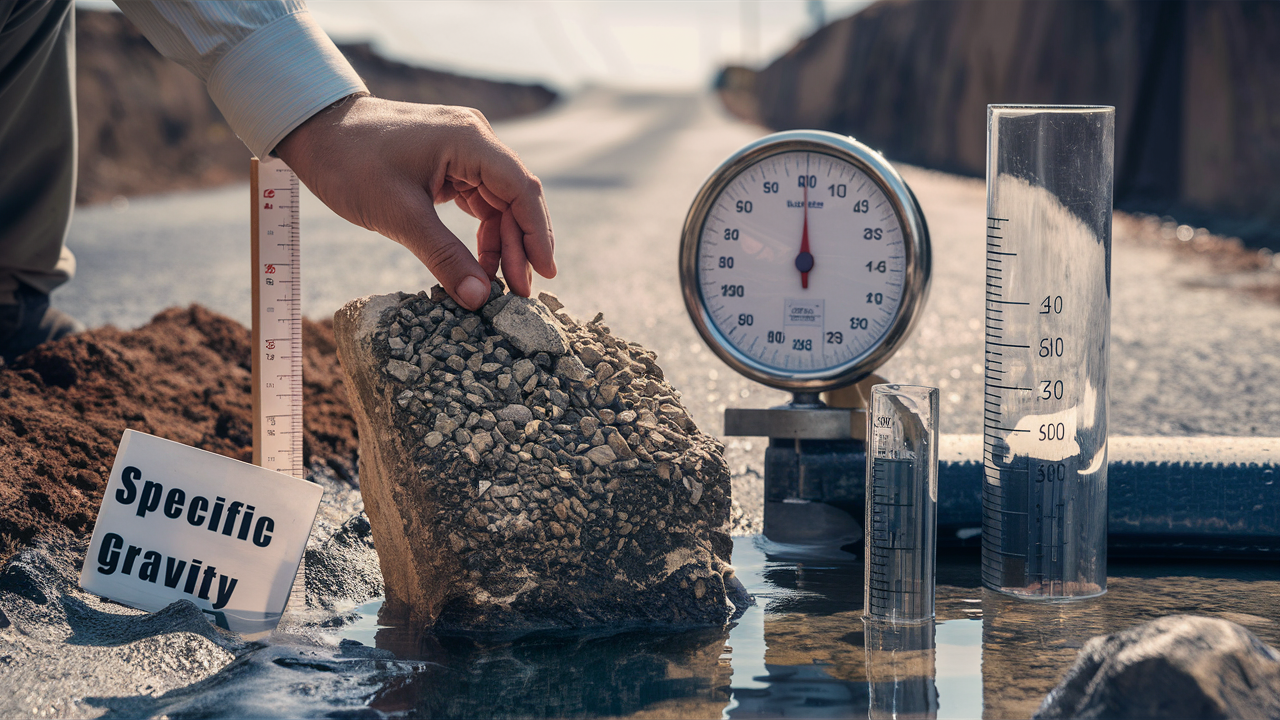Table of Contents
What is Sub-Base Specific Gravity and Why Does it Matter?
Sub-base specific gravity is a measure of the density of materials used beneath road surfaces compared to water. This metric is crucial because it helps predict how well the sub-base will support and maintain the structural integrity of the road, ensuring durability and safety.
Common Sub-Base Materials and Their Specific Gravity Ranges

Common materials used for sub-base include crushed rock, gravel, and sand. Each material has a specific gravity range that affects its functionality. For example, crushed rock typically has a higher specific gravity, offering better stability and drainage.
The Impact of Sub-Base Specific Gravity on Pavement Performance
The specific gravity of sub-base materials directly influences the pavement’s ability to withstand loads and environmental stress. Materials with appropriate specific gravity values help improve the lifespan and performance of the pavement, ensuring it remains functional under various conditions.
How to Determine the Specific Gravity of Sub-Base Material
To determine the specific gravity, samples of the sub-base material are first dried and then weighed. They are submerged in water, and their wet weight is measured. The difference in weights helps calculate the specific gravity, indicating how the material will perform under pressure. See You More Sub-Base Specific Gravity.
Meeting Project Specifications with Sub-Base Specific Gravity

Ensuring that sub-base materials meet specific gravity specifications is vital for compliance with engineering standards and project durability. Accurate measurements help engineers choose the right materials to meet the demands of the project, reducing the risk of structural failures.
The Consequences of Ignoring Sub-Base Specific Gravity
Not paying attention to the weight of materials used under roads in building projects can cause big problems. If the wrong materials are used, they won’t support the road well. This can make the road break down quickly, showing cracks, ruts, and uneven surfaces. These problems can make the road unsafe for people driving and walking. Ignoring this can lead to expensive fixes, more upkeep, and a shorter life for the road. So, it’s important for building teams to check and follow the right guidelines for these materials to keep roads safe and lasting longer.
Benefits of Using Sub-Base Material with Optimal Specific Gravity
Using the right materials under roads is very helpful. When these materials have the right weight, they make a strong base. This base helps spread out the weight from cars, which keeps the road from getting damaged easily. This means the road will last longer and won’t need as much fixing. Also, using the correct materials makes the road work better. It gives a smoother ride and can handle weather changes and water better. By choosing the right materials from the start, road projects can save money over time and make safer, better roads for everyone.
Resources for Further Information on Sub-Base Specific Gravity

For those working in pavement construction who need more info on sub-base specific gravity, there are plenty of helpful resources. Groups like the American Association of State Highway and Transportation Officials (AASHTO) and the Federal Highway Administration (FHWA) provide clear rules and methods for checking sub-base materials. You can also find useful tips and best practices in easy-to-read papers, studies, and case reports from trusted schools and organizations. Talking to seasoned engineers, soil experts, and materials suppliers can give practical advice and help tailored to your specific project needs. By using these resources, builders can better understand sub-base-specific gravity and make smart choices to ensure their pavement projects succeed.
Case Studies: Examples of Successful Construction with Proper Sub-Base Specific Gravity
Studying case studies of successful projects that focus on the right sub-base specific gravity is very helpful. These studies show projects where careful choices, testing, and use of the right sub-base materials have led to strong and long-lasting roads. By looking at the problems faced, solutions used, and results achieved in these cases, construction teams can learn from past projects. This helps them improve their future projects. These case studies also show the good things about focusing on sub-base specific gravity, like better road performance, longer road life, and saving money. By using these lessons, construction teams can make better roads that last longer and offer more value to everyone.
Final Thoughts
The specific gravity of sub-base materials is key to how well and how long pavement lasts. By understanding this, construction teams can make smart choices to keep their pavement strong and functional for a long time. Focusing on the right specific gravity for the sub-base not only improves the road’s performance and lifespan but also cuts down on early damage and costly fixes. By following project rules, using resources wisely, and learning from successful projects, construction teams can achieve great results. This leads to durable, high-quality roads that meet the needs of communities now and in the future.
FAQs:
What is the compaction of the subbase?
Subbase compaction involves compacting the subbase material to achieve a specified density, typically around 95% of maximum density.
What is the thickness of the subbase?
The thickness of the subbase layer varies depending on project requirements but generally ranges from 4 to 12 inches.
What is the density of the subgrade?
The density of the subgrade, or the natural soil beneath the pavement layers, varies based on soil type and compaction effort, typically ranging from 90% to 100% of maximum density.




